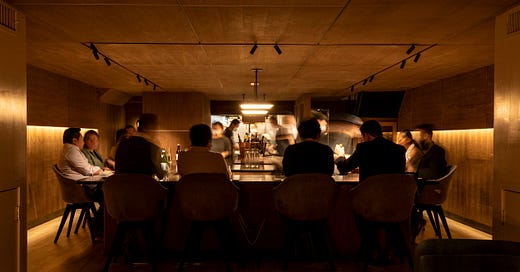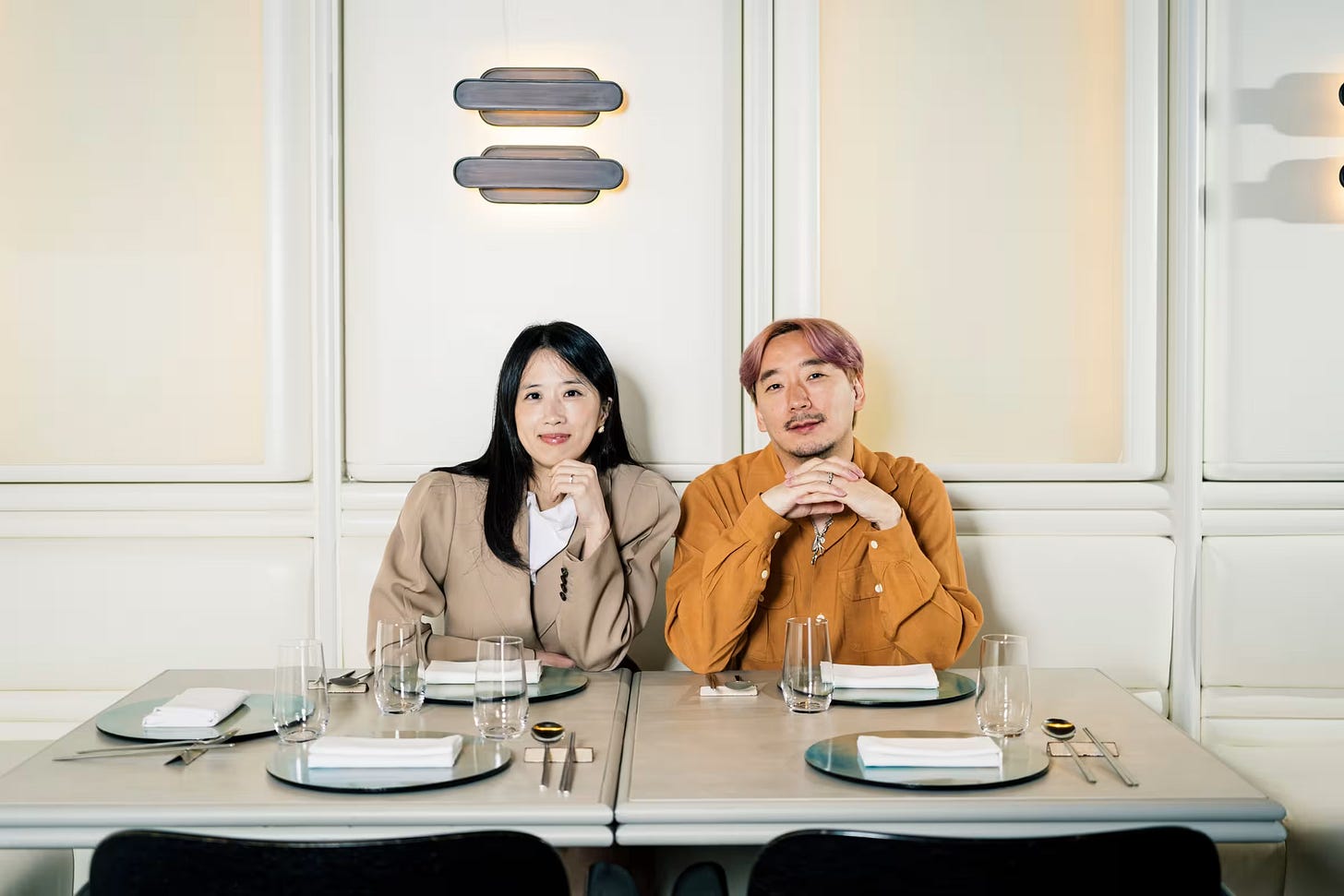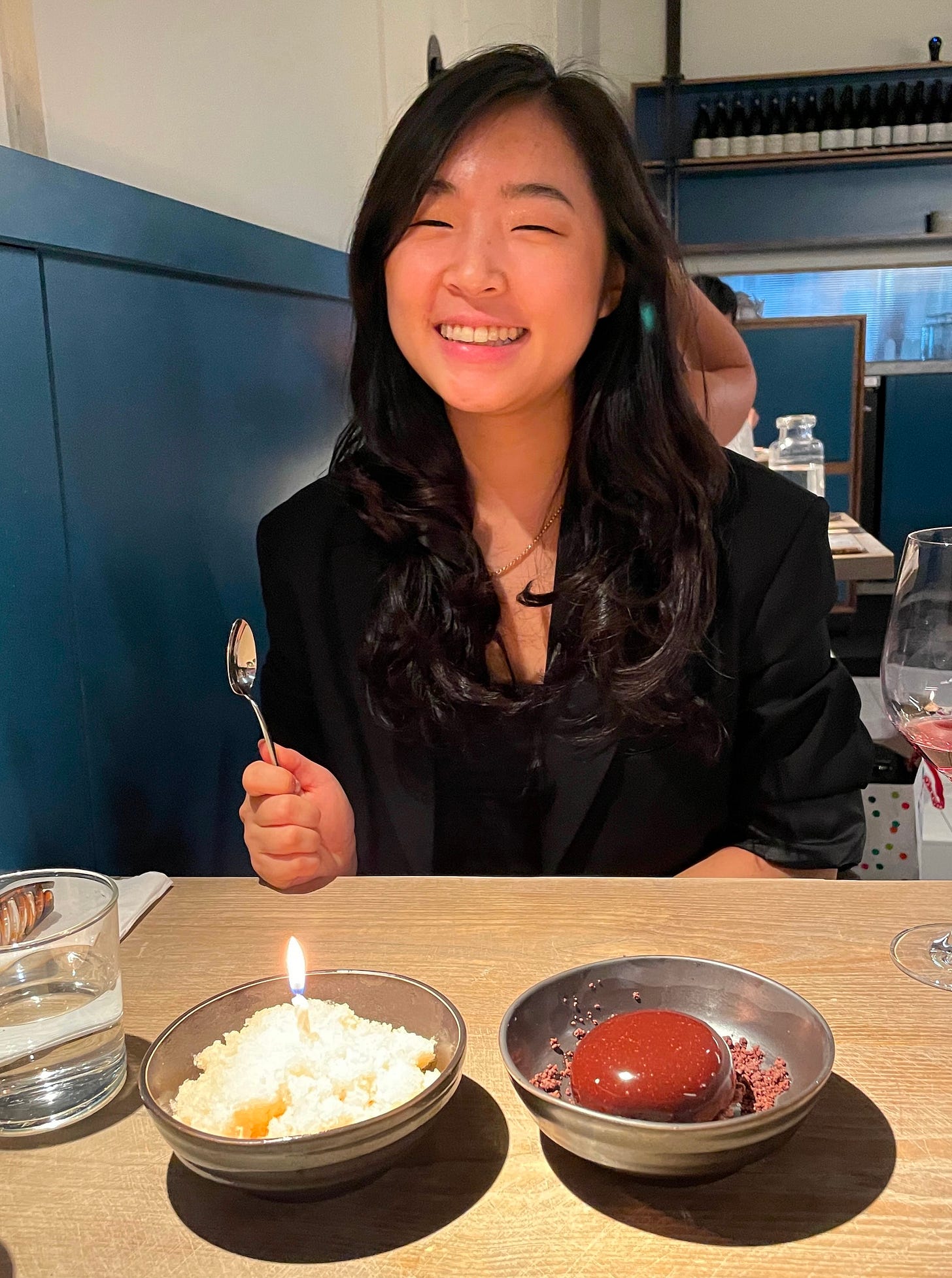when korean fine dining forgets where it came from
nyc's korean restaurants are starting to feel like cash grabs for people who don’t actually eat korean food
PRELUDE
Hi everybody! Let’s dig in… shall we?
Graduation was a few weeks ago, which meant I finally had an excuse (and my mom’s wallet) to splurge on two restaurants NARO and ACRU. I went in excited to try out these two spots, only to be immediately hit with disappointment. Not exactly the post-grad celebration meals I had in mind, and a devastating blow since I’ve always been a fan of Atoboy – another restaurant under NA:EUN.
First off, let’s talk about what NA:EUN Hospitality is: the organization behind every new, hot Korean restaurant in NYC these days. Before I have to say what I have to say: what they have been able to achieve is undeniably incredible.
NA:EUN Hospitality was founded in 2022 by a husband and wife team: Chef JP and Ellia. They combined their love of food and hospitality, launched NA:EUN, and now they manage infamous restaurants: Atoboy, Atomix, NARO, ACRU, and Seoul Salon. Widely credited for brining Korean cuisine to the forefront of fine dining, they continue to open new, boundary-pushing restaurants while collecting Michelin Stars and James Beard awards. They are an integral part of a NYC food culture legacy for many years to come – there is no doubt about it.
Their name “naeun” translates to “better” in Korean (나은). According to their website: “this reflects the hospitality group's mission to provide a better cuisine, a better service, and a better culture for the world.” And honestly, don’t we kind of look alike? A little resemblance? And we’re both food themed?


Before we get into their restaurants (and other NYC Korean restaurants), I would also highly recommend checking out my friend Dajung’s post first:
She and I both grew up in Korea before we met in a boarding school in Connecticut, years later. She accurately verbalizes the frustration many Koreans have felt in recent years, in response to the rise in popularity of Korean cuisine.
TABLE CHAT
There was a moment, not too long ago, when NYC’s Korean fine dining scene felt like a shift. Atoboy opened and actually meant something. It was inventive, precise, and still recognizably Korean. And it was just so cool. Banchan reimagined with technique (apple kimchi still blows my mind to this day, and something I’ve been dying to make at home). It didn’t feel like it was pandering – it just was. And that was enough.
But now? It feels like a lot of these places are performing Korean-ness more than living it or bringing it authentically to the table.
Take NARO. The food is good, sure. But lately it feels like Korean flavors are being treated like design elements – ingredients used not because they belong, but because they’re unexpected, and thrown in simply because they exist within the umbrella of Korean ingredients.
My mom had the popular Oyster Mushroom Rice Bowl at NARO with hidden garlic root in the rice that’s usually a banchan – a side dish seen on its own in Korea. Here, it’s buried under rice and truffle and a whole lot of other stuff, like a forgettable vegetable that didn’t know why it was there. Not elevated. Just astray.
Seoul Salon is another case study. It’s a night-out spot for people who’ve never actually gone out in Seoul. The vibes are curated, the food is good but forgettable, and the prices are... funny. It feels like it’s designed to catch the drunk Midtown weekend crowd on their way home from somewhere else.
The mission of “elevating” Korean food is a phrase that always makes me flinch. What are we elevating it from? Korean food is peasant, farmer food. Why do you think we have so many vegetables and obscure roots? Why do you think most (I know this is debatable) home-cooked Korean food is tossed in the same three ingredients (sesame oil, soy sauce, scallions)? Most Korean dishes come from struggle, not splendor. They’re fermented, preserved, stretched out to last. They were survival tactics before they were pretty shareable Instagram pictures. Turning them into a luxury meal might be technically impressive, but it erases the reason they existed in the first place.
This maybe would be less upsetting under different timing or economical circumstances: investing in luxury Korean fine dining when mom-and-pop shops in New York and New Jersey are going out of business, really makes me think sometimes. So does messing with the affordability scale. When was Gammeeok, once a staple in K-town that brought in generations of Korean-Americans, and jet-lagged weary Koreans straight off their flight from JFK, worth taking a loan out for?
Kisa is pretty. Social media loves it. But authenticity isn’t just a set design choice. If you’re swapping out raw shrimp for raw salmon to appease diners who flinch at anything too foreign, then who is this food actually for?
Look, I’ll still go. My boyfriend and his family LOVE this place. And I like it a lot too. But if you’re not Korean, JUST KNOW: any actual self-respecting Korean taxi driver would run away, cussing them out in that classic ajusshi-way cause an actual meal at this type of establishment in Korea would cost them about $6-8 USD – for more. And free refills. Any Korean restaurant who charges me extra for a bowl of rice, needs to fight me in Foley Square ASAP. Like yesterday. And as I previously mentioned, many of these taxi driver restaurants in Korea have gone out of business and no longer exist, speaking to the lack of affordable meals to workers who are essential in Korea.
Even the collaborations I still like – Cote x Sweetgreen’s Korean KBBQ Steak Bowl – are teetering the line. It tastes good (usually just means sweeter, and my god do Koreans have a sweet tooth). But they also dilute. They make Korean food “safe,” which often just means... familiar to white diners.
And maybe that’s the point. Maybe we’ve gotten so obsessed with proving that Korean cuisine deserves a seat at the fine dining table that we’ve lost sight of what made it so powerful and unique in the first place. The goal was to stand next to Japanese cuisine on the world stage and maybe even be better. But to who? Somewhere along the way, we started imitating its essence instead of embracing our mess. Our flavors. Our roots.
“However, globalization only shines when it’s met with ample consideration on how it can synergize with the environment, the people, and the history of the place it’s implanting on. There is a beauty in navigating these things with care and depth, and a little part of my soul dies when I see businesses globalizing just for the sake of expansion.”
You can’t sanitize. You can’t tweezer-plate a culture that grew from scarcity. And you definitely can’t pretend this is evolution when it feels more like just really good marketing.
Maybe the food still tastes good. But it doesn’t feel like ours anymore.
That’s all for today! And the death of any future Korean restaurant sponsorships I was probably (never) going to have.
Skylar xx
![[banchan]](https://substackcdn.com/image/fetch/$s_!bzBv!,w_80,h_80,c_fill,f_auto,q_auto:good,fl_progressive:steep,g_auto/https%3A%2F%2Fsubstack-post-media.s3.amazonaws.com%2Fpublic%2Fimages%2F4020a6b2-7d75-439c-8957-0777f2e5fe65_1200x1200.png)

![[banchan]](https://substackcdn.com/image/fetch/$s_!bzBv!,w_36,h_36,c_fill,f_auto,q_auto:good,fl_progressive:steep,g_auto/https%3A%2F%2Fsubstack-post-media.s3.amazonaws.com%2Fpublic%2Fimages%2F4020a6b2-7d75-439c-8957-0777f2e5fe65_1200x1200.png)





